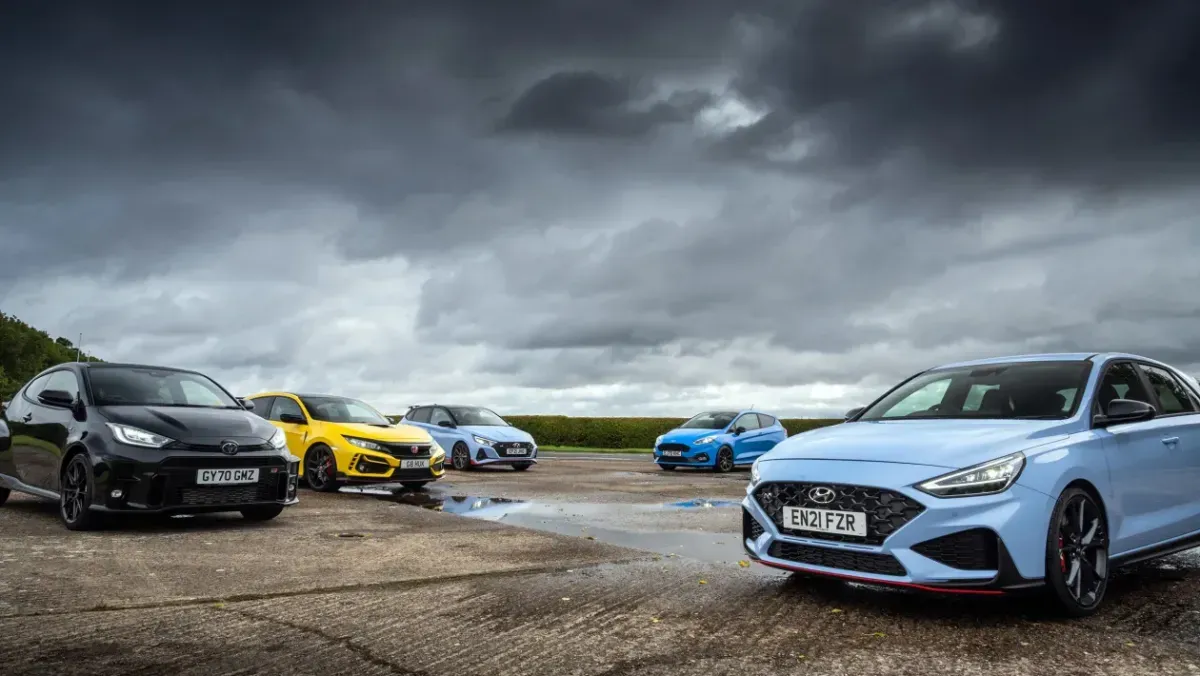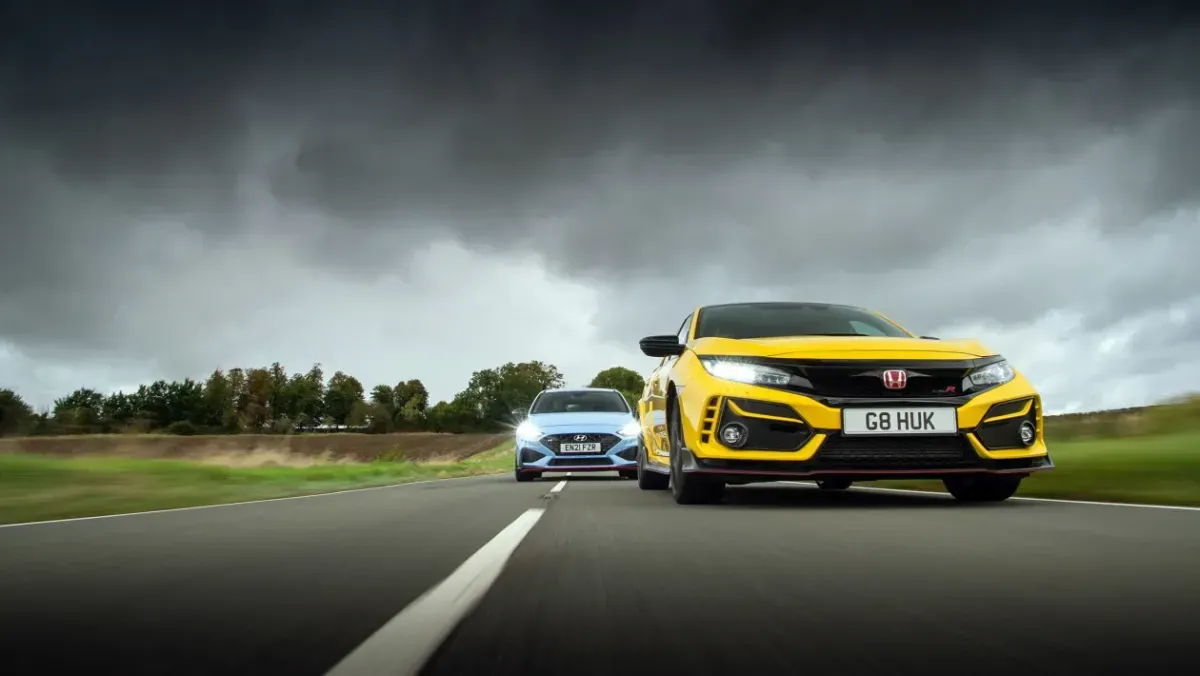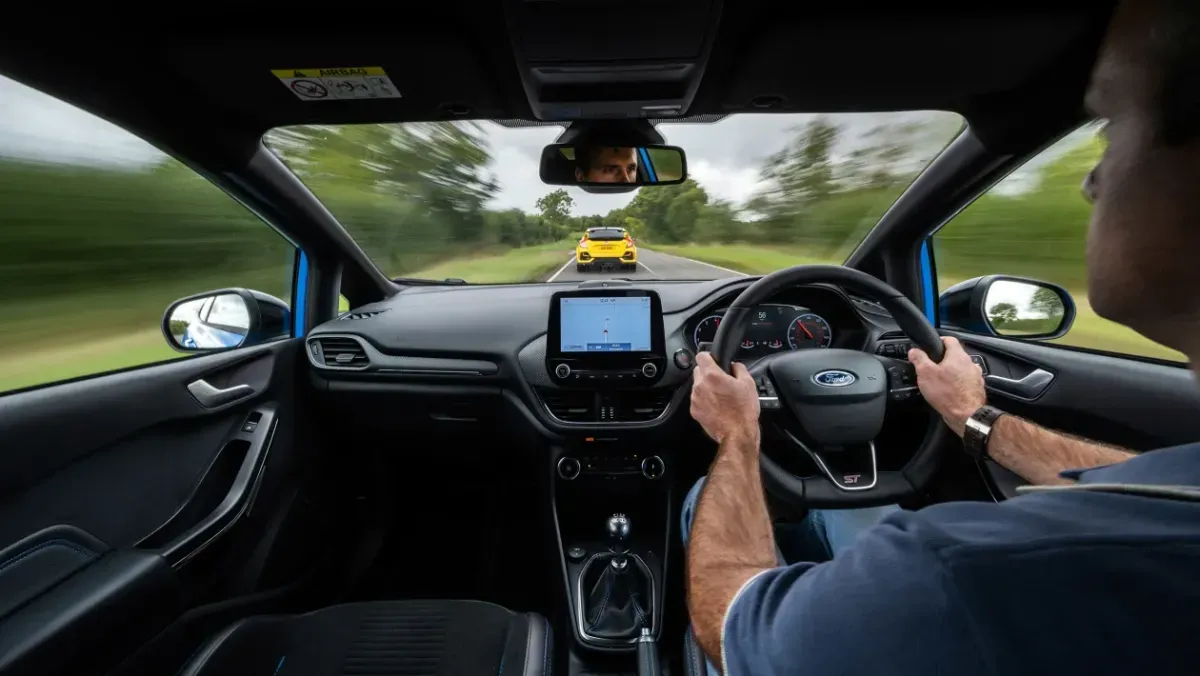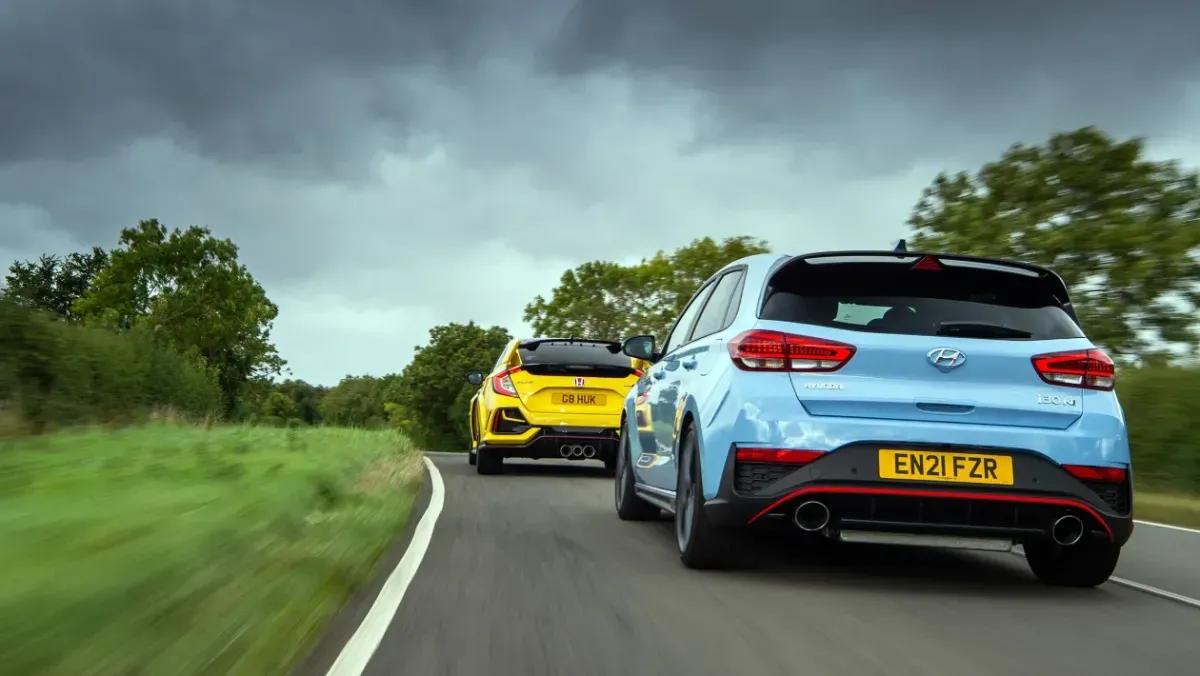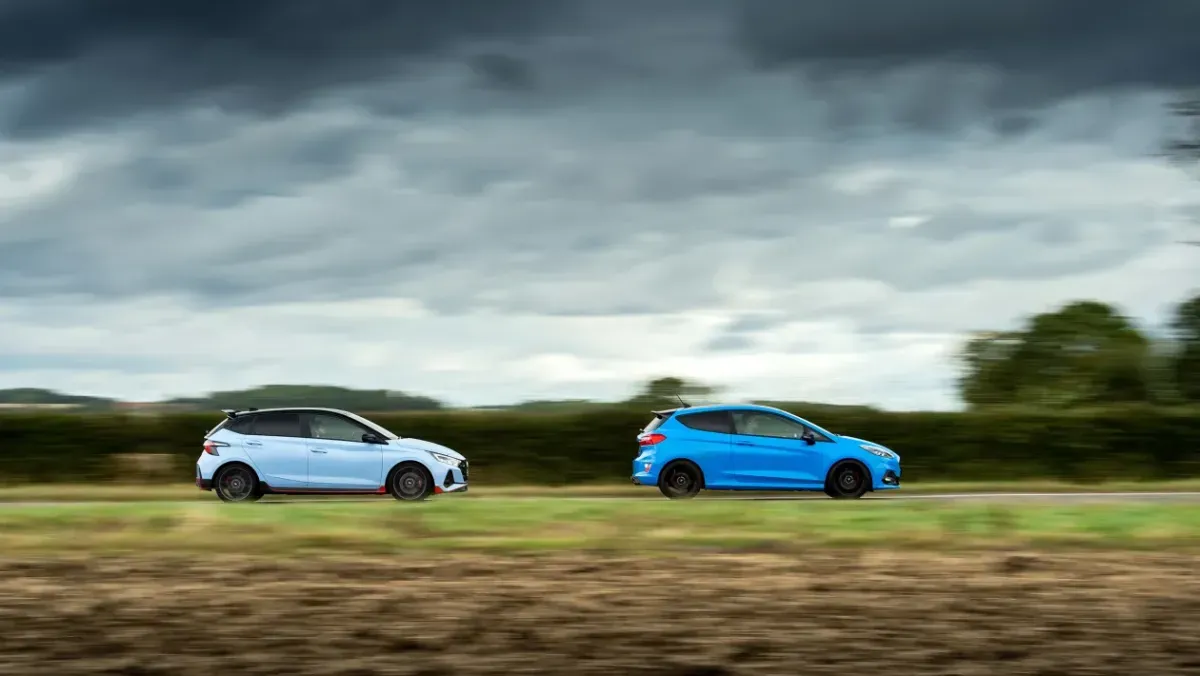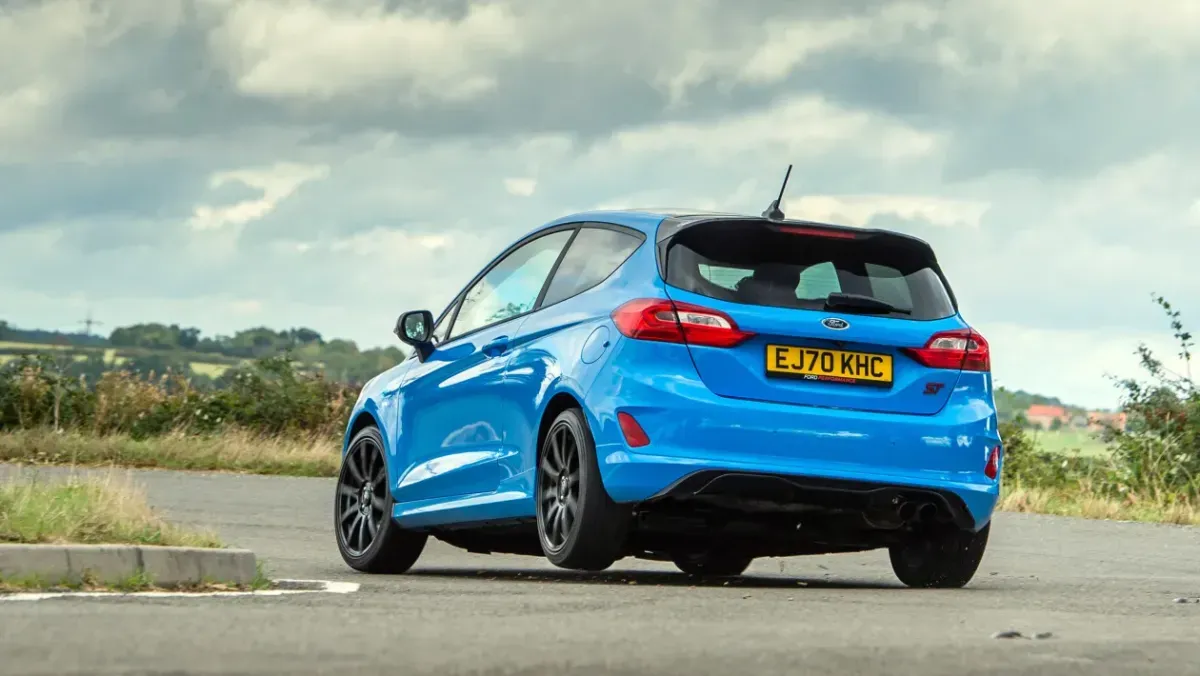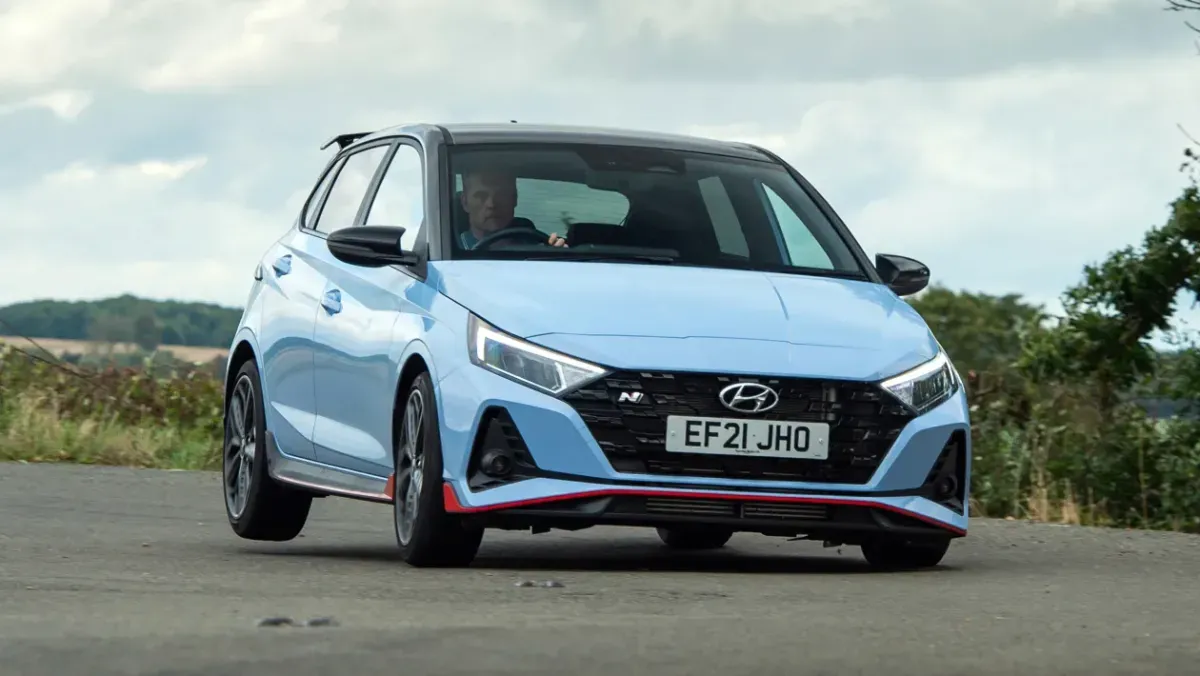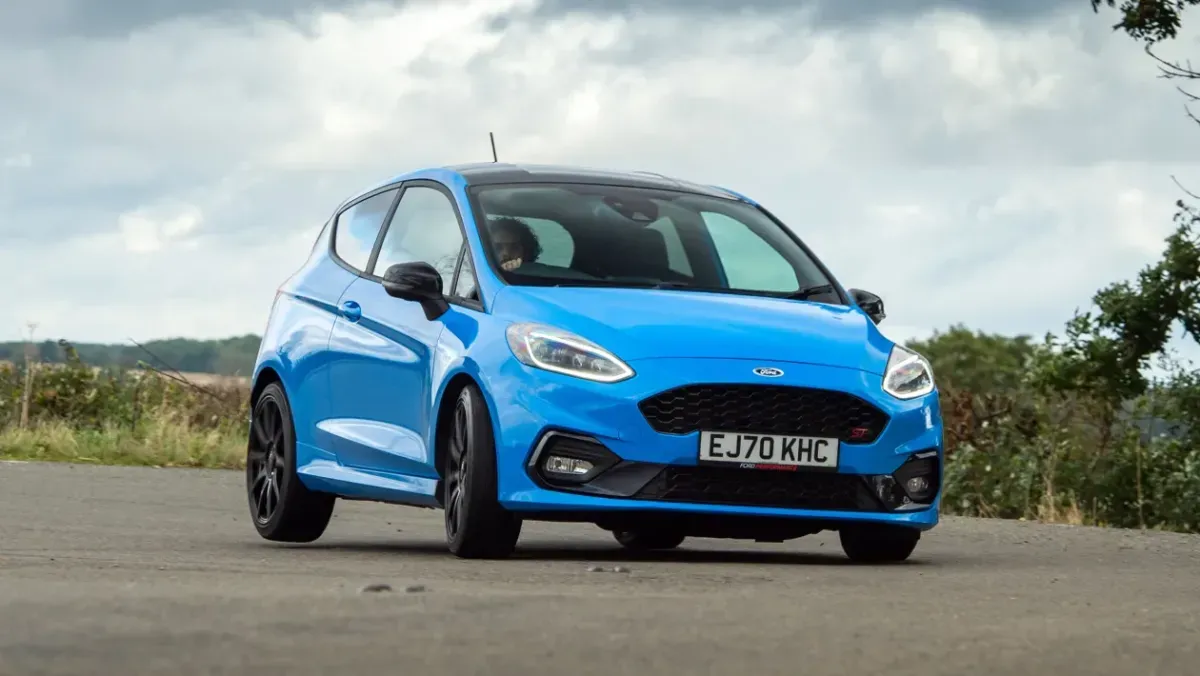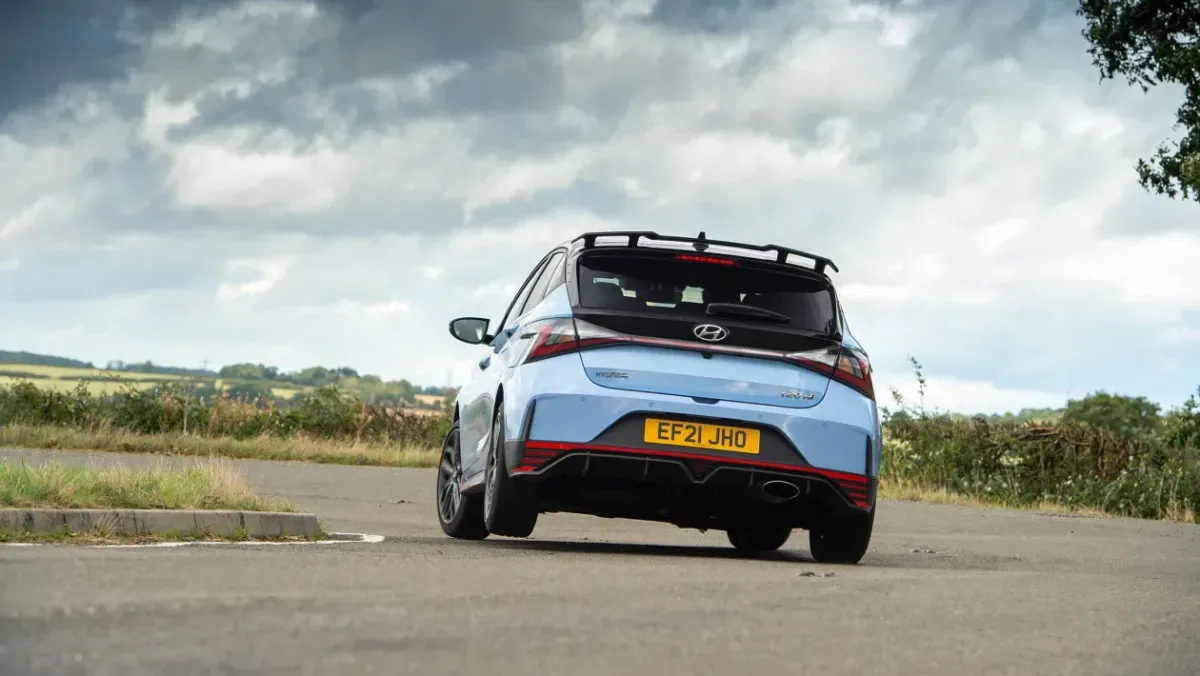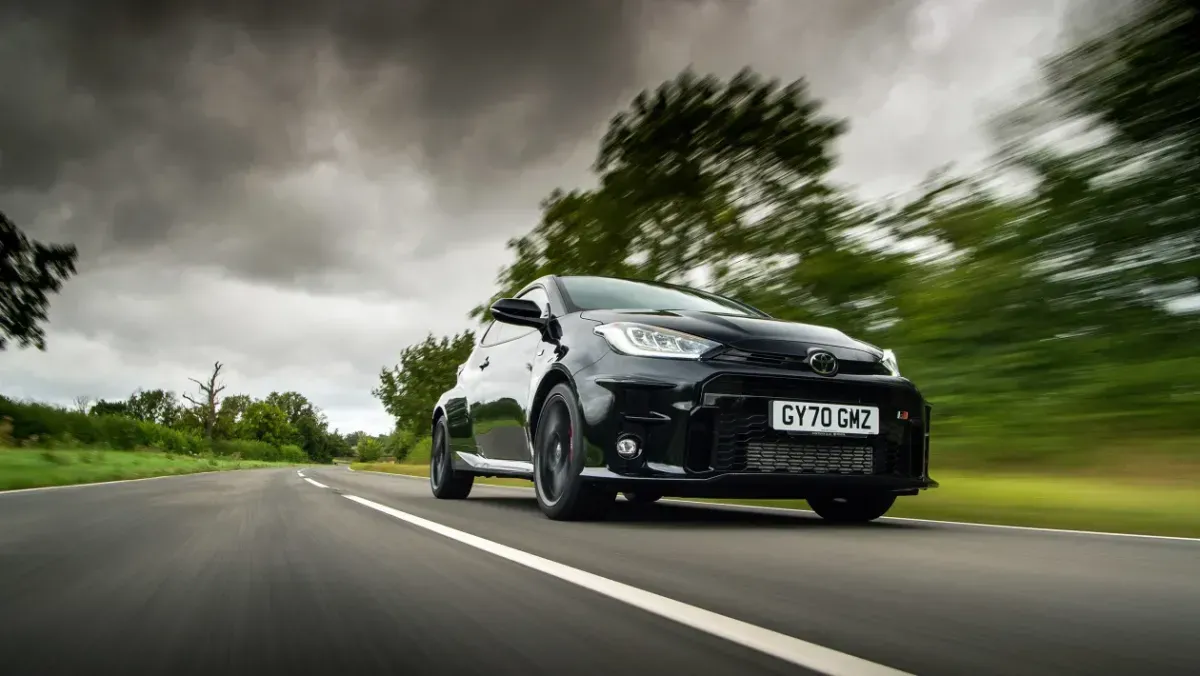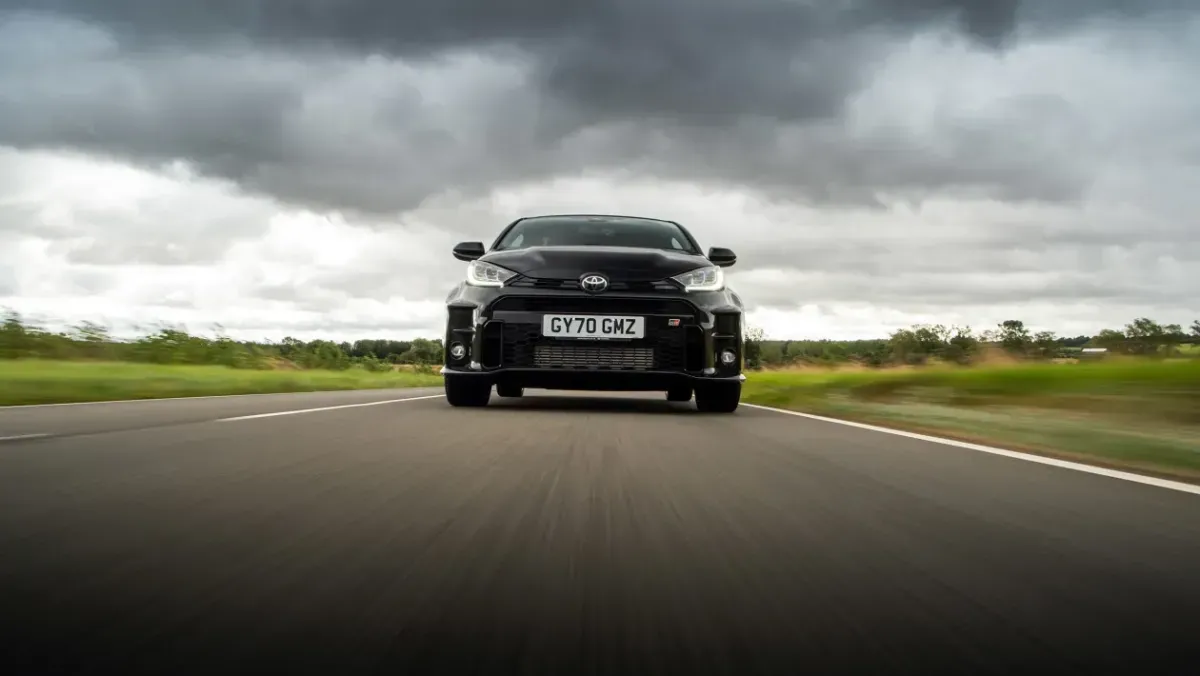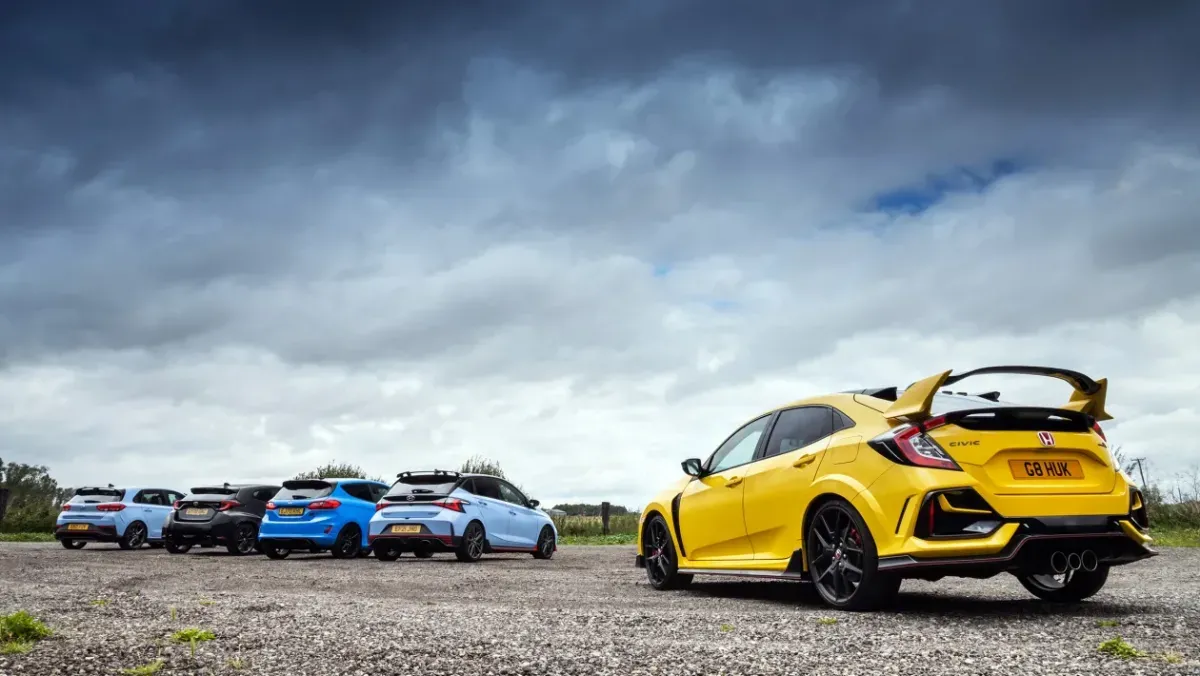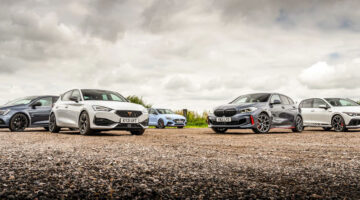The cream has risen to the top in our three heats, but what’s the best hot hatchback on sale right now?
From the bleak hilltop passes of the North Pennines, via the pockmarked, nip-and-tuck tarmac ‘stages’ of mid Wales, to the familiar – but no less revealing – Bedfordshire lanes, in 2021 we have done everything we can to sift through the current crop of hot hatchbacks in pursuit of a winner. We’ve driven them collectively thousands of kilometers, we’ve argued at length about them, and we’ve enjoyed driving them and debating their relative merits more than with almost any other class of performance car this year. There have been disappointments; there have been revelations; troublingly a few have left us cold, but there is one, overarching thing we can all agree on: the cars you see here are the ones we genuinely believe to be the finest on sale at this moment in time.
So, how do you approach the current hot hatch market? I think we all have our own idea of what a hot hatch should be, informed by our age and the cars we grew up with, our thoughts on what constitutes value for money, how highly we rate outright performance compared with driver feedback, and so on. For some the paragon will always be a 205 GTI, for others a Mégane RS, or perhaps a Golf GTI of some description. Big, small, fast, slow, raw, refined – it’s a broad church, certainly.
So we decided to break things down into three separate tests, loosely termed ‘the small ones’, ‘the everyday ones’, and the ‘expensive, high-powered ones’. No, not necessarily the most catchy of working titles, but we had to draw the lines somewhere, and in the absence of obvious demarcation zones we decided to mark out our own.
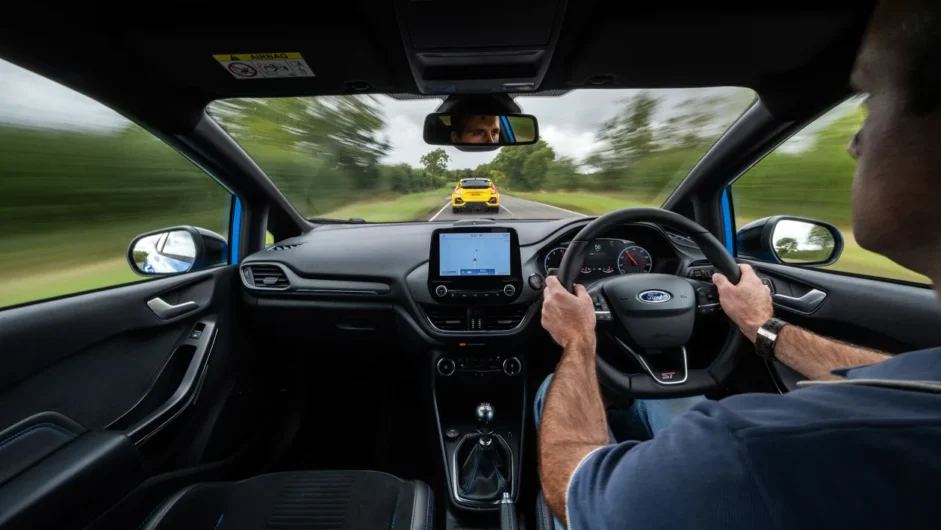
The small ones meant the ubiquitous Ford Fiesta ST and its new rival, the Hyundai i20 N, but we also put the Toyota GR Yaris in there simply because it’s… small. Or smaller. The high-end group comprised the Honda Civic Type R, the Mercedes-AMG A45 S and the VW Golf R Performance Pack: three very different cars, but whether on price, power or singleness of purpose, these felt like the extreme end of the market. Lightweight, two-seat ‘specials’ were kept on the sidelines, note. And finally there was the middle ground, the most densely populated area of the market, with VW Group clones and cars like the BMW 128ti: fast, everyday-useable, practical… hot hatches in a traditional mould. Would there be a surprise from that camp?
There certainly were surprises. One test brought forward just one finalist, in another every car went through. So there would be little point in pounding the mountain roads of the region all over again. Instead, the following is an explanation of why, in their own ways, they’re all great hot hatchbacks of the modern era.
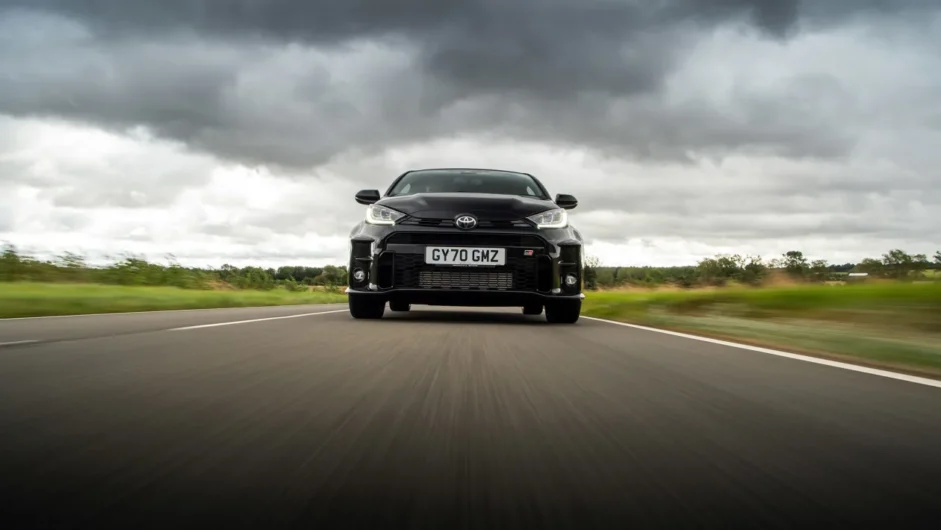
Toyota GR Yaris
Does the GR Yaris win? You could argue that it does. Certainly if you like your hot hatchbacks on the small side but with truly giant-killing performance it remains the essential purchase, a car bristling with energy and purpose.
When we pitted the Toyota against the Fiesta ST and the i20 N, we exploited the chance to put the non-Circuit Pack-equipped car under the microscope for the first time, but Messrs Barker and Meaden returned saying the higher spec car would have been preferable, if for no other reason than for its more aggressive Dunlops. So it’s the ‘CP’ model you see here – evo’s old Fast Fleet car no less, for now retained by Toyota UK – and driving it again is affirmation that this is a truly special and unique car, full stop. Visually a belligerent and unapologetic kind of ugly-beautiful, it rests easy in the knowledge that as a homologation special – even if Covid snatched its competition remit largely away – it has an inherent kudos that every other car in this story can only dream of emulating.
It is astonishingly rapid point-to-point, feeling far more potent than ‘257bhp’ would ever have you believe, and much of that is down to the way it wastes so little of that motive force thanks to a four-wheel-drive system that remains determined at all times to squish every last horsepower into the asphalt.
The reason you might not want to award it the win here, or perhaps more accurately, the reason you might want to park it on its own little island in these finishing results, is that it’s both something more and something a bit less in terms of being an actual hot hatch. Its overall proposition is unlike any other; it also remains something of a bargain and so has the habit of spoiling our best attempts at finding rivals. Did it feel like a fair fight against the Ford and the Hyundai? No, not really.
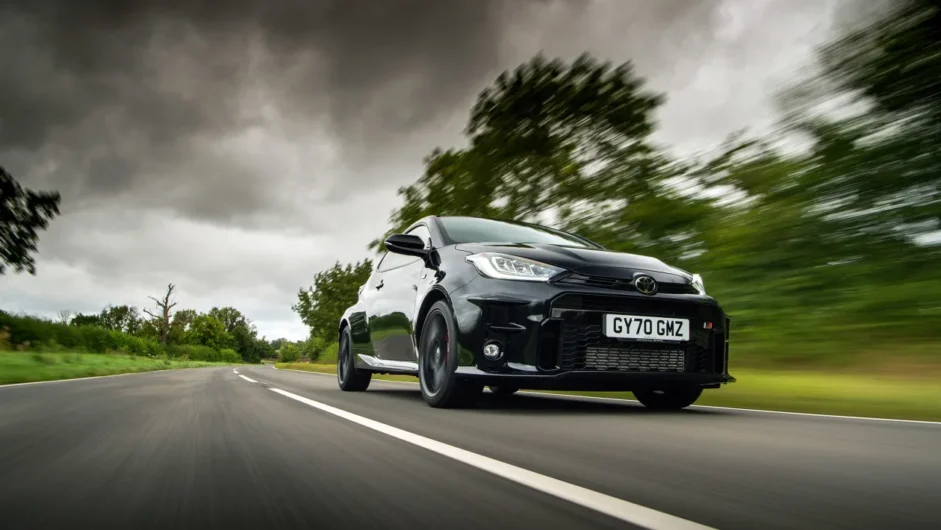
But the fact that it did turn into a genuine contest betrays where the Yaris isn’t quite so strong. If you like your hot hatches to feel ‘all on the nose’, to have a tail that’s mobile and keen to adopt an angle of attack via a lift of the throttle and/or steering input, the Yaris may not be the car for you. Its approach is deadly serious, where the Fiesta is out for a good time. That the Ford can hold on to the Toyota’s rear bumper, in the dry at least, shows just how well it uses what power it does have.
Sometimes I just wish the Yaris felt a little more on its toes, that the steering had more clarity and a certain sharpness, hard to define but missing currently. I wish that giving it everything in the middle of a wet, 90-degree curve produced a more tail-happy result, and that its damping really was oblivious to any road’s challenge, which it feels like it might be but actually doesn’t quite pull off. So much is absolutely excellent about this little car, but it is a unique, slightly alternative character, and that opens the door to the rest of the contenders in this test to have their own shining moment.
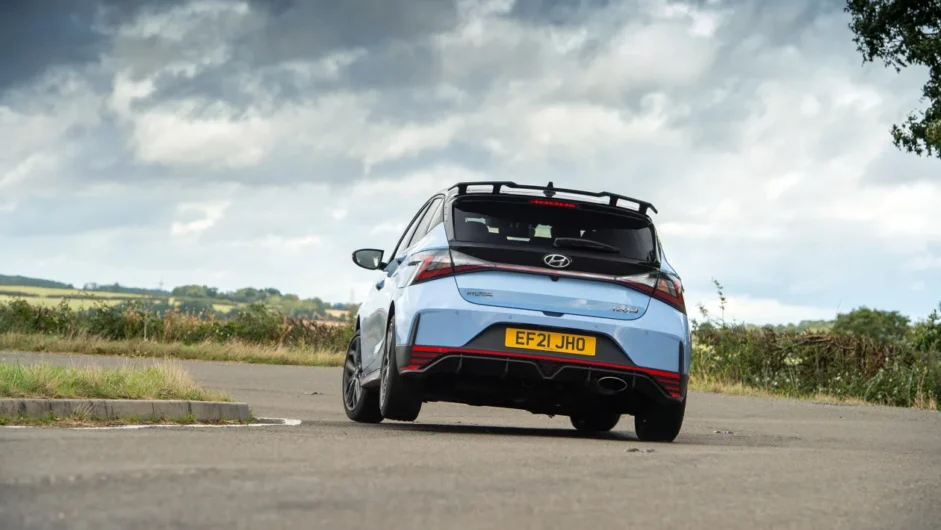
Hyundai i20 N
Could we really not separate the Hyundai and the Ford? Dynamically, the Edition version (such a charismatic name… not) of the Fiesta ST just had the edge, but the i20 N’s package of willing four-cylinder motor, superbly effective LSD, high equipment count and polished dynamics – all for £25,000 – make it a great all-rounder in the finest hot hatch tradition. There is nothing the i20 N isn’t good at, whether acting as a daily commuter, as a trackday companion, a B-road weapon or a practical five-door five-seater. This is a little car that can do it all, marrying the traditional aspects of a punchy engine, a manual gearbox and an entertaining chassis to great effect.
And so the arguments raged back and forth. Was the Ford worth the extra money? Did its talents in one area outweigh the Korean car’s overall strengths? Maybe the Ford just edged it in the end, but if nothing else you might baulk at paying £28,770 for a Fiesta and we could completely see why you might join the lengthy waiting list for an i20 N. It seems good news travels fast and that demand is strong.
Driving the i20 N on the same piece of Bedfordshire road straight after the Ford is endlessly fascinating. You can sense the Hyundai’s chassis having to work very hard when the surface is at its most challenging, the rear getting light under hard braking. It’s not got the same composure as the Ford, the same unflappable damping, but you can trust it, push it hard, revel in the grip it has and its willingness to bring the rear axle into the cornering process, usually with the inside wheel hanging in the air. I also love the positivity of the diff, the way it just sucks the nose of the car around the corner at a speed that had appeared impossible moments earlier, and how the engine just loves to be thrashed – even though it’s a turbo – the way that engines in small hot hatches always used to.
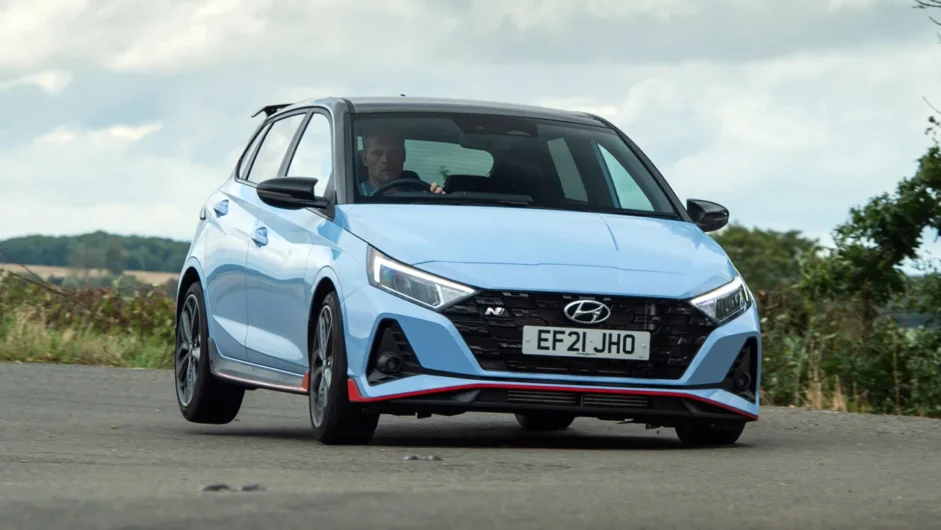
There is no one aspect that stands out, but the steering is accurate and nicely weighted, the gearshift light and positive, the brake pedal feel fair, the seats supportive, the exhaust tone nicely rorty. Much like the Ford, the i20 N is indisputable proof that a good hot hatch isn’t about power or lap times, and that sometimes small and simple is best, even today.
New performance cars don’t really get much more affordable than this, and as a first rung on the ladder there’s so much to love here. Most of all, we’re simply glad that there’s a manufacturer out there willing to develop and deliver a new hot hatch to this template, arguably the purest one of them all.
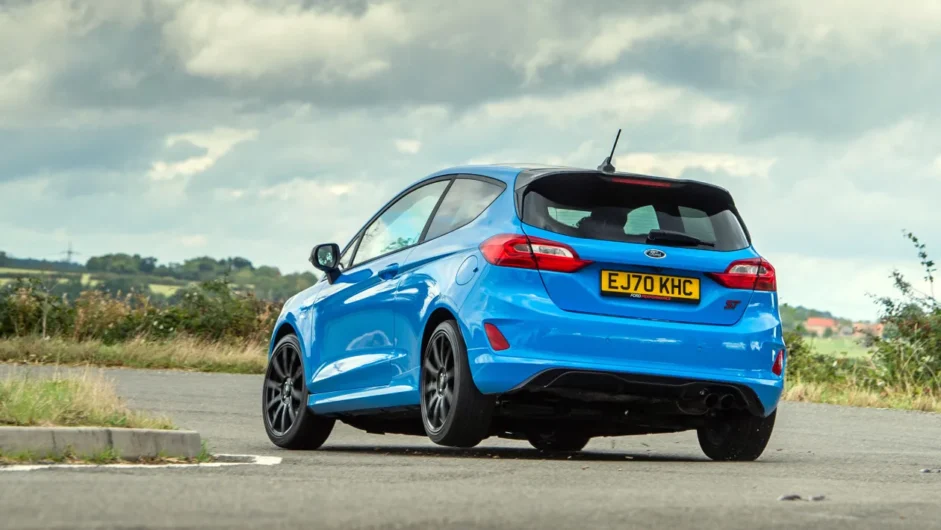
Ford Fiesta ST Edition
Ford has kept the faith with the small, conventional hot hatch where others – Renault Sport, Peugeot, Citroën and VW among them – have not, and the result has been years of domination for a little car with appeal far beyond numbers on a page. Ford seems to have an inherent understanding of how to make a small, affordable car that appeals to both the mass market and the hardcore enthusiast in the same package. Starting from relatively humble components, that’s a lot harder to do in practice than it sounds.
You can still buy a Fiesta ST from £21,995, and had we put a ‘basic’ ST‑2 into battle in our triple test it would still have fared extremely well. Well enough to beat the Hyundai? Of that I’m not so sure, but it would have been defeat by the very smallest of margins. The standard ST doesn’t have quite the broad spread of talents that the i20 N has, and its interior is less easy on the eye. That said, Ford has revealed the Fiesta’s 2022 refresh, which addresses many of the cosmetic shortfalls of the outgoing car, and a ‘new’ ST is also due. Maybe it will turn the tables again.
It was the unlikely form of the little Ford that showed up the potential weakness of the Yaris, too. In Edition guise some might say it’s perilously close in financial terms to a car with an extra driven axle and 60bhp more, but to drive the Fiesta is to experience a concentrated hit of hot hatchdom in the old style, and it’s none the worse for that.
With its Ford Performance coilovers, the Edition is stronger dynamically than the i20 N – just. It can parry and shimmer over bumps that leave the Hyundai flat-footed; in fact, there’s almost no surface or combination of bumps that can catch the Ford out, and in this regard, as mentioned earlier, it even has the measure of the Yaris.
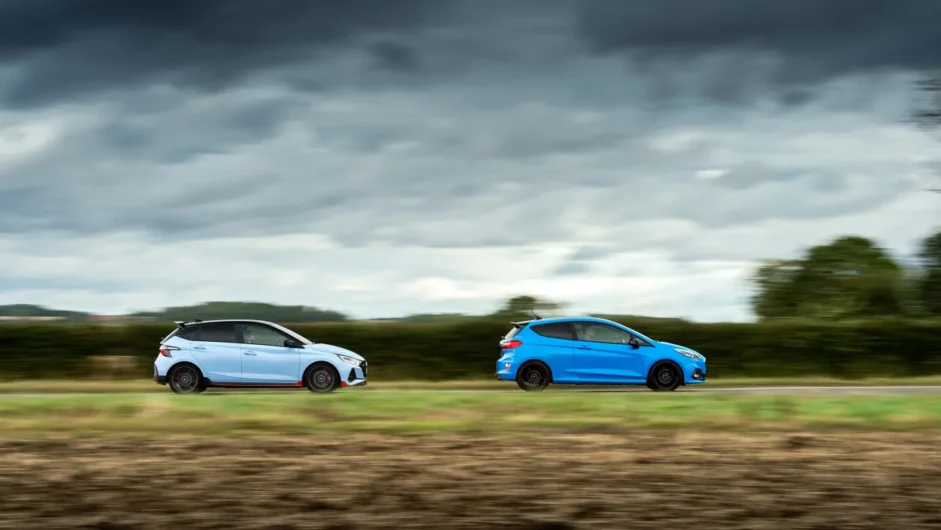
The three-cylinder turbo is a classic triple – hugely gutsy in the mid range, but a little breathless at higher revs. It sounds fruity though, and in a much more convincing way than the Toyota, even if it has more off-boost torpidity and nothing like the ultimate punch available.
Overall, the Fiesta – and the i20 N – prove that the older, smaller style of hot hatch is more relevant today than ever. These cars are so different to the larger VW Group offerings that they almost deserve a different classification. But whatever your budget, and however ubiquitous the Fiesta may seem, anyone considering a potential hot hatch purchase in 2021 cannot afford to overlook the baby Fast Ford.
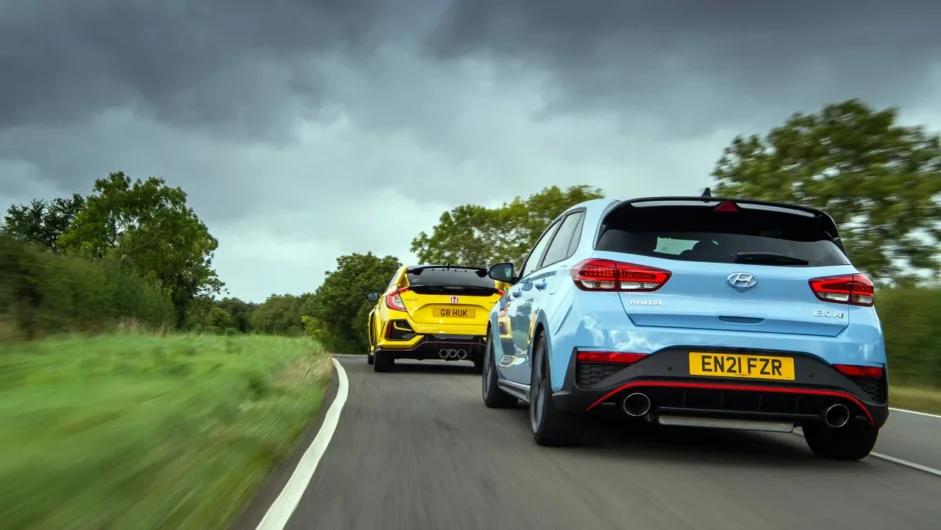
Hyundai i30 N
Our ‘middleweights’ shootout produced the biggest turnout – five cars, with the newly facelifted i30 N joined by the VW Golf GTI Clubsport, the Cupra Leon 300, the BMW 128ti and the also newly refreshed Renault Mégane RS 300.
So there’s no greater compliment than to say that in the end there was always going to be only one winner and four -rans. The Golf was quick and competent, the Renault amusingly lively at times, but there were significant holes in their armouries, and the Cupra and BMW barely scored any hits at all.
What an unexpected state of affairs that is: the ultimate front-drive hatches from VW, Renault and what was SEAT, along with genre outsider BMW, and yet it’s a Hyundai that not only out-drives them but makes you believe it’s been developed by a group of people who really care about the same stuff we do.
The changes to the i30 N are small. There’s the option of some proper seats at last, and they’re lighter too; a tiny bit more top-end horsepower adds a dash of keenness to how the 2-litre turbocharged motor revs out; the infotainment has been modernised and there are more ways to trigger the car’s multiple modes, the highlight being Individual, where the engineers have appreciated that if you’re going to provide options they need to be the right ones, and delivered in a form that’s easy to tailor and then access. The ride quality is a little better, too, although it’s still on the overt side of sporting. The i30 N is nothing like as impressive from an engineering sense as the Civic Type R, but then most would agree that it’s an awful lot easier on the eye, and as an ownership proposition too, even if the recent price rise has placed it uncomfortably close to the Honda.
It’s still not perfect. It’s relatively heavy, and that does blunt its performance very slightly, meaning the engine has to be properly stoked if you’re to make the kind of progress that the image of an N-car suggests. And if you want a completely undemanding companion, in the mould of a Golf GTI with a DSG ’box slipping through the ratios and gliding along on its optional DCC variable dampers, then the i30 N probably isn’t the car for you. Yet that doesn’t sound to us like a set of requirements for a great hot hatch, and the fact that the i30 N can confidently straddle both camps makes it currently unassailable in this class. And if a twin-clutch gearbox really is a must, you can now order an i30 N with one of those, too.
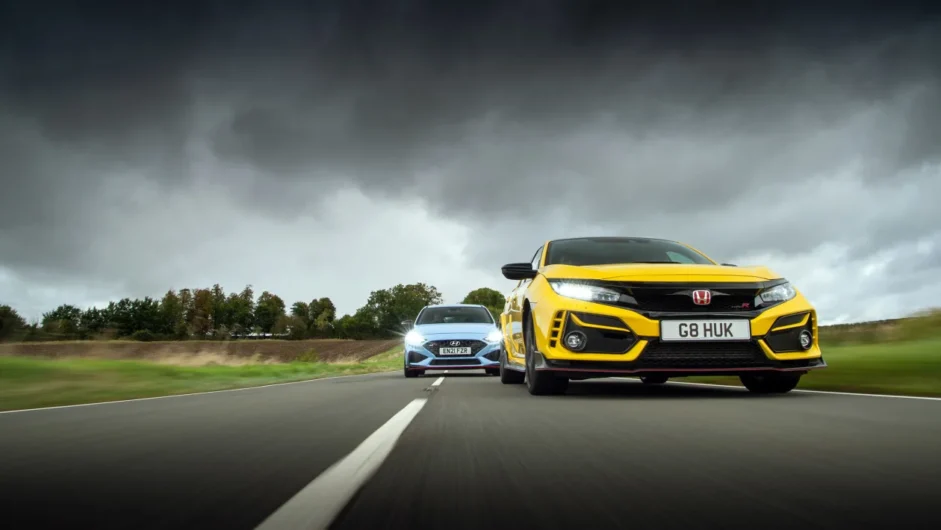
Honda Civic Type R
In terms of a conventional hot hatch test, the Civic basically wins. You are probably not that surprised. If you want the ultimate front-wheel-drive hatch, nothing else comes close; indeed, you may just be looking at one of the greatest hot hatches of all time. Nothing has managed to topple this car’s supremacy since its arrival in 2017.
Don’t be fooled by the fact that it’s a Type R Limited in these photos: it was the only Type R we could get for this shoot, for reasons that will become apparent shortly. The Limited is even better on a track, but sometimes not quite as convincing on a mountain road, and it’s so limited – just 20 units in the region – as to be virtually unobtainable.
It was the Civic in regular GT trim that faced up to the AMG A45 S and new Golf R on some of our favourite roads in the North Pennines. These can be tortuous, unforgiving roads, fast in places, tight and twisty with almost no warning, and often with a surface akin to a kicked-about hearth rug. They completely destroyed the new Mk8 Golf R, which turned up touting a drift mode and a formidable price tag, but had no answer for what the road had in store. We went as far as to wonder if this particular Golf was defective in some way, so off the pace did it seem, but we’ve subsequently been assured by VW that it was match fit. We can only think that Volkswagen has stripped the R model of investment as the firm makes the hideously expensive switch to EVs. Beyond the divisive nature of its interior, the Mk8 Golf R feels like a car where the attention to detail and the quality of the bits that really matter has been systematically stripped back to keep the costs in check.
Then there was the formidable presence of the Mercedes-AMG A45 S, but even with 415bhp and four-wheel drive it was left gasping trying to keep up with the 316bhp Civic – a lesson if ever there was that a great hot hatch is about a lot more than just horsepower. That the AMG put up a good fight says a lot about what a decent, capable car it is, but it was no match for the Honda, particularly in terms of driver appeal.
Beautiful steering, damping so deftly tuned, an engine that loves to chase the red line and, of course, a gearchange that’s the envy of every other manual-equipped car. You may not love how the Civic looks, but it truly is the 911 GT3 of hot hatches. Just a shame that right now you can’t buy a new one…
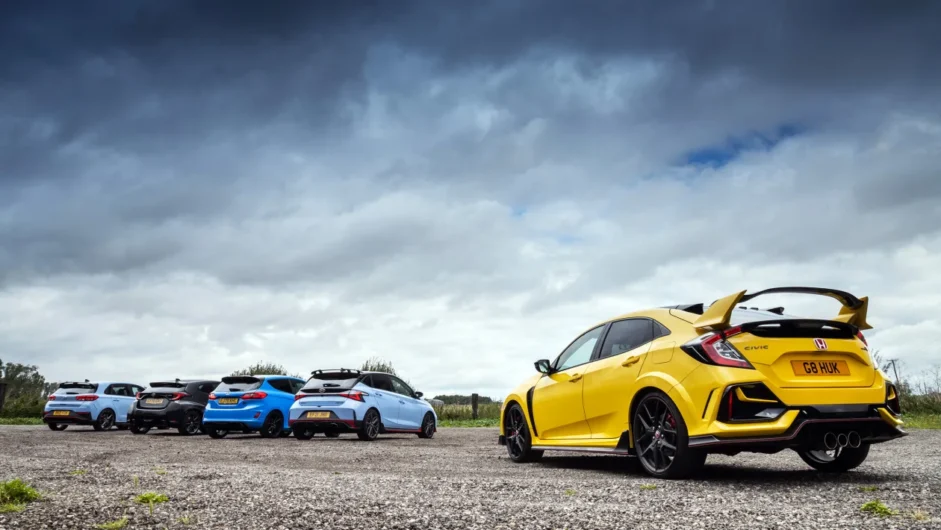
The conclusion
Given the doom and gloom often associated with these dying days of ICE-powered vehicles, it was a pleasant surprise to find the hot hatch market so vibrant and well supported. What also emerged within our final group was that, here at evo, we like our hot hatches with manual gearboxes and, GR Yaris excepted, front-wheel drive.
Outright power, tellingly, doesn’t seem to be a factor. Sure, the Type R has an abundance of it, but it’s hard to imagine it with any more, or to desire any more. No one needs a hatchback that can exceed the best part of 273kph; some sort of invisible barrier has been reached.
Similarly, with the twin-clutch four-wheel-drive crowd, the 100kph time has become largely irrelevant, just as it has done with performance cars higher up the food chain. Boiled down to its essence, we like hot hatches that have that terrier spirit; that don’t take themselves too seriously; that require the driver’s input at all times, and reward in equal measure.
We left out certain cars but never missed them. The Ford Focus ST, Mercedes-AMG A35 and regular Golf GTI, to name three, all have their merits but were either roundly beaten in the past by cars featured this year or simply weren’t competitive or desirable enough to register on our radars. We didn’t bother with the Suzuki Swift Sport simply because it’s not very good, ditto the expensive and rather bland Audi S3, and there was no Mini present for much the same reasons – quite a fall from grace for a brand that was once at the very centre of this market. Audi’s new RS3 has arrived since our shoot-outs and is much improved over its predecessors. It’s still hard to imagine it challenging the very best we’ve seen here, but we can’t wait to find out if it can.
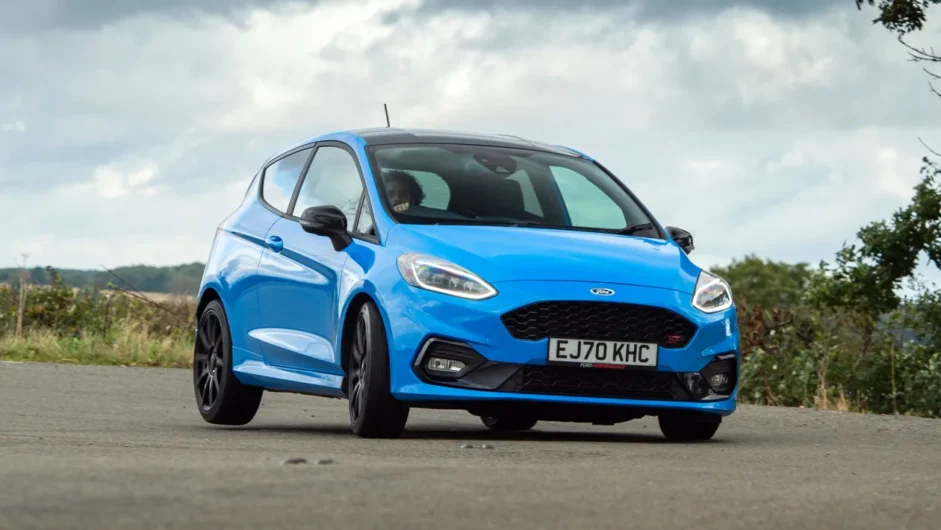
Still, the fact remains that the mighty Honda is no longer on sale. The Swindon factory has closed, which is about as final as you can get, and while there may be the odd example left in the dealer network, there won’t be for long. Low-mileage cars are changing hands for a significant premium, and some dealers even deny all knowledge of the dewinged Sportline version’s existence, which must surely make it one very rare Type R indeed. The R is coming back of course, with a lightly disguised car already teased in official images from Honda. Ominously for its rivals, it appears to retain the mechanical package but clothed it in a more conventional body, removing at a stroke one of the biggest hurdles to Type R ownership (yes, those looks).
Right now, this puts Hyundai’s i30 N in an unlikely position. We’d take it over any of the cars in its own group, of that there’s no doubt. And having driven them all extensively, I’d easily have it over a new Golf R and pocket the change. The VW is sterile; the Hyundai is a warm character, engaged, unapologetic in being a hot hatch, yet able to do the day-to-day as well. Over an A45? Yes, I’d take it over that too. Driver involvement always trumps outright pace in my book, and while many might laugh, I’d rather the N’s wholesome motorsport-bred image than the AMG’s bad boy slickness. So if I needed a decently sized hot hatch, not a minnow, right now, and whether this victory is by default or otherwise, the winner appears to be the Hyundai i30 N.
You may still be a Ford person and rightly so, or you may only have eyes for the Toyota GR Yaris and love everything it encapsulates about a manufacturer that refused to adopt the tired excuses of other car companies, made a car through passion, and has been reaping the benefit of sales and brand kudos ever since. But what can’t be denied is the presence of that peculiar shade of pale blue at the top of our 2021 hot hatch contest, because this is the year that Hyundai’s N brand truly has come of age.
> 2022 hot hatchback battle: the middleweights
This article originally appeared at evo.co.uk
Copyright © evo UK, Autovia Publishing

